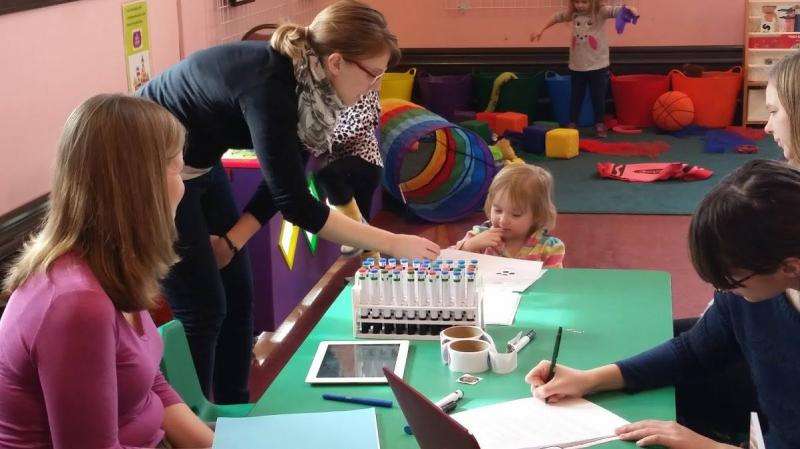Visuo-olfactory social affective matching in childhood

Psychologists and neuroscientists have thoroughly investigated olfactory behaviours in newborns and adults, but relatively little is known about the characteristics of the sense of smell during infancy and adolescence. In a study carried out by SISSA in collaboration with the Please Touch Museum of Philadelphia (an interactive science museum for children), over 150 children aged 3 to 11 years old took part in a simple experiment allowing investigators to trace the curve of visuo-olfactory integration. In the study, published in Developmental Science, the researchers found that before the age of 5 children find it difficult to combine what they see and what they smell as to make decisions in a social context.
"The experiment was very simple," explains Valentina Parma, researcher at the International School for Advanced Studies (SISSA) in Trieste and leader of the study. "The children first smelled one of three odours - rose, rotten fish or no odour. Then, they were asked to pick one of two faces that appeared on a screen by pointing to it. The expression of the faces could be happy or disgusted."
As Parma explains, children up to the age of 5 tend to choose the happy face, irrespective of the odour smelled. "Children prefer these faces because they convey a positive emotion; it's a general tendency that is well known in the literature." After the age of 5, however, children start to choose the face whose expression is congruent with the odour they have just smelled. "The odour they subjectively judged as being less pleasant – usually, but not only, fish! – made them more likely to select the disgusted face" continues the researcher. This behaviour becomes increasingly evident with the increasing age of the children.
"Our work helps to fill a gap in the literature by describing how sight and smell are integrated during typical development in children and adolescents and indicating how the sense of smell can affect a child's ability to make choices. Many hypotheses have been put forward to explain the mechanisms underlying this process," comments Parma. "The most likely is that this behaviour is related to the development of the theory of mind, that is, the ability to take another person's perspective. We know that this ability improves significantly around the age of 5, so we hypothesise that the selection of the face showing an expression congruent with the olfactory cue is related to the ability to identify with the person whose face is being displayed on the monitor."
Science at the museum
Another aspect that makes this study particularly original is the fact that the experimental part was all carried out on children visiting the Philadelphia Please Touch Museum. "The project was made possible by a grant of the National Science Foundation, a major American institution that offers funding for outreach programmes that put the world of research in contact with that of science museums." concludes Parma. "It has been a new experience for us and I have to say that it's been both fun and instructive."
More information: Annachiara Cavazzana et al. When preschoolers follow their eyes and older children follow their noses: visuo-olfactory social affective matching in childhood, Developmental Science (2016). DOI: 10.1111/desc.12507

















